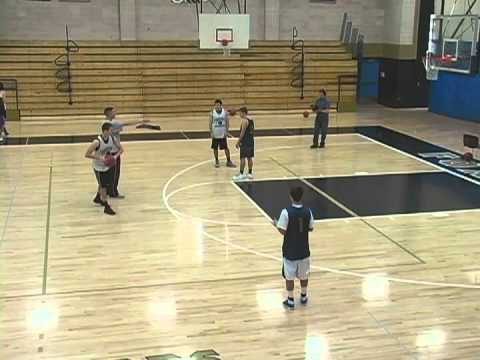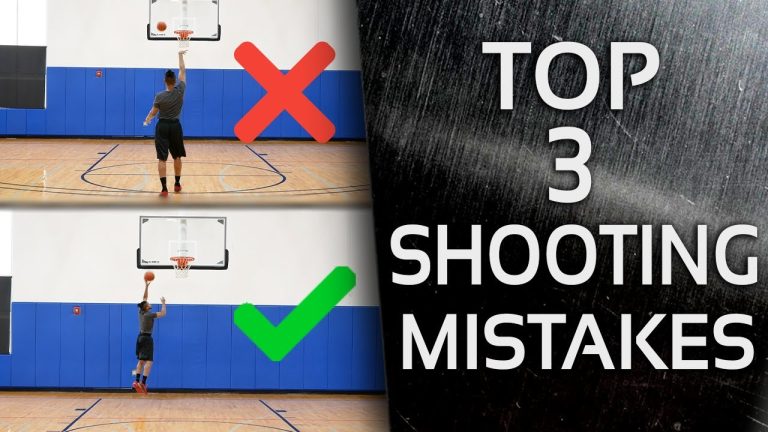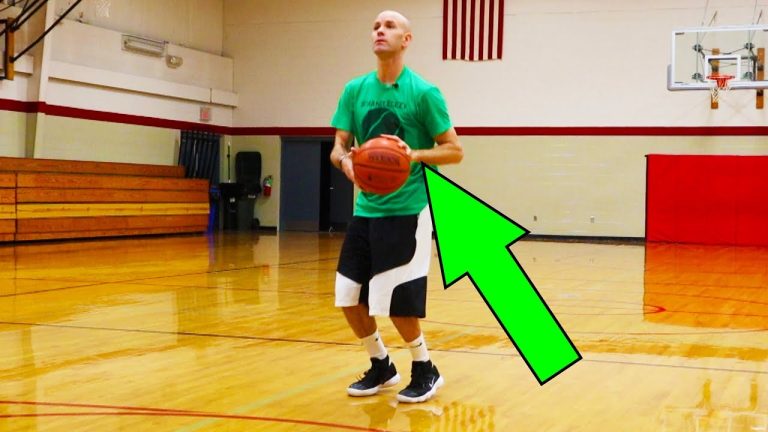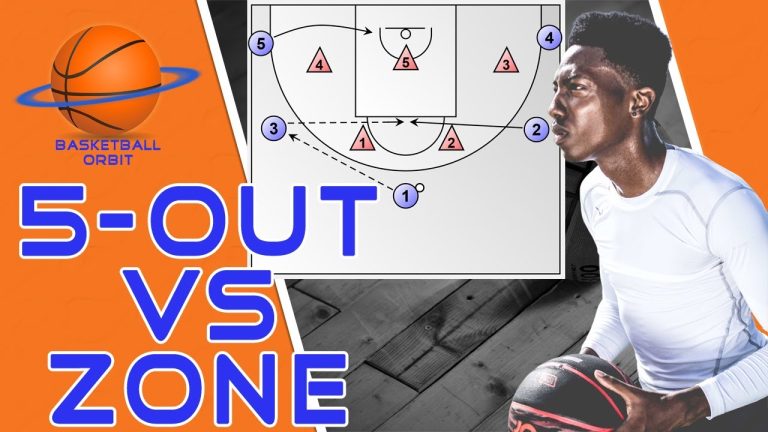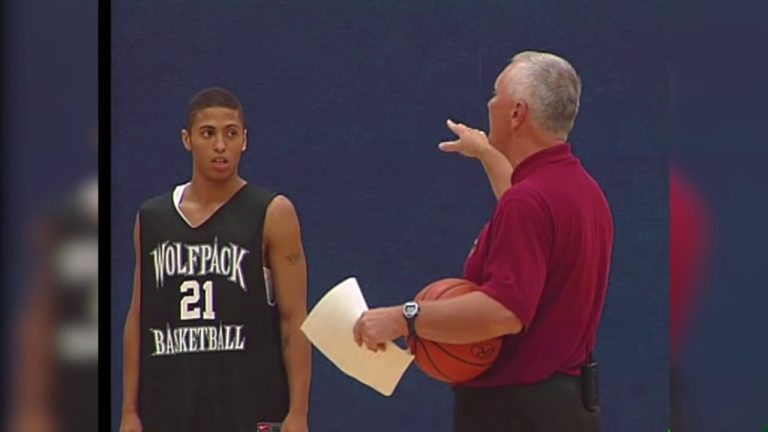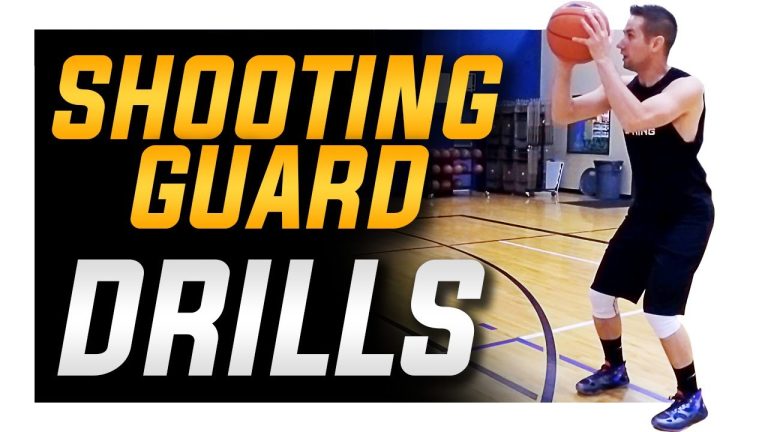In the fast-paced game of basketball, a strong transition defense is the key to shutting down the opponent’s attack. Especially in a man-to-man defense, where players are responsible for guarding specific opponents, the ability to quickly and effectively transition from offense to defense is crucial. It requires seamless communication, anticipation, and disciplined positioning. In this article, we delve into the intricacies of transition defense in a man-to-man scheme, exploring the strategies and techniques that can help teams prevent easy baskets and gain an edge on the court.
Advantages
- Quick Reaction Time: Transition defense in a man-to-man defense allows the players to be more aware and react quickly to the offensive team’s fast break. This is advantageous as it helps prevent easy scoring opportunities for the opponents and allows the defense to set up properly.
- Individual Accountability: Man-to-man defense requires each defender to guard a specific player on the opposing team. In transition defense, this individual accountability ensures that there are no defensive breakdowns or missed assignments, as each defender is responsible for their assigned player. This advantage helps in maintaining defensive integrity and preventing easy baskets.
- Communication and Coordination: Effective transition defense in man-to-man requires constant communication and coordination among the defenders. This advantage allows the team to communicate and adjust quickly to offensive threats, ensuring that no player is left unguarded or uncovered during the transition. Good communication and coordination lead to fewer defensive mistakes and better overall team defense.
Disadvantages
- Disadvantage 1: Vulnerability to fast break opportunities
- In a man-to-man defense, where each player is responsible for guarding a specific opponent, transition defense becomes more challenging. As players focus on their individual matchups, they may struggle to quickly identify and react to fast break opportunities by the opposing team. This can lead to easy baskets and scoring advantages for the opposition, as they exploit the lack of coordination and communication in the transition defense.
- Disadvantage 2: Difficulty in defending against screens and off-ball movement
- Transition defense in a man-to-man defense often requires players to quickly switch and adjust their defensive assignments. This can be particularly challenging when the offense sets screens or utilizes off-ball movement to create open scoring opportunities. In such situations, defenders may struggle to communicate and switch effectively, leading to defensive breakdowns and leaving opponents open for shots or cuts to the basket. The complexity of transitioning from guarding one player to another can create mismatches and exploitable gaps in the defense.
What does the term transition defense mean?
Transition defense is a crucial aspect of basketball that involves smoothly shifting from offense to defense. It encompasses the actions taken by a team to quickly retreat and set up their defensive formation after a score, rebound, or steal. While one guard typically assumes the responsibility of protecting the back, the entire team must hustle back and actively participate in preventing the opposing team from capitalizing on fast-break opportunities. With its simplicity and importance in minimizing the opponent’s scoring chances, effective transition defense is a fundamental skill that every basketball team should master.
What is the definition of help defense in man-to-man?
Help defense is a crucial component of man-to-man defense. It involves a defender who is positioned two or more passes away from the ball, serving as the last line of defense. The player in help defense adopts a specific stance, with one hand pointing towards their opponent and the other hand pointing at the basketball. This allows them to maintain awareness of both their assigned man and the movement of the ball, using their peripheral vision.
By positioning a player in help defense, the team ensures that there is always a defender ready to provide support and protect the basket. This strategy helps prevent easy scoring opportunities for the opposing team. The defender in help defense constantly monitors their opponent and the ball, using their peripheral vision to anticipate plays and react quickly. This enables the defense to effectively contest shots, apply pressure, and help teammates who may be in a vulnerable position.
Overall, help defense plays a vital role in man-to-man defense by providing an additional layer of protection. It requires defenders to maintain constant awareness of both their assigned man and the ball, employing peripheral vision to track the movement of both. With a strong help defense, teams can effectively limit the scoring opportunities for the opposition and increase their chances of success on the defensive end of the court.
What is the alternative to man-to-man defense?
When it comes to basketball defense, the 2–3 zone is a compelling alternative to the traditional man-to-man approach. This strategic defensive formation is named after its unique setup on the court, with two players positioned upfront and three players guarding the back. By employing the 2–3 zone, teams can effectively protect their basket and disrupt opponents’ offense by creating a wall of defenders that makes it challenging for the opposing team to find open passing lanes or penetrate the defense.
In contrast to man-to-man defense, the 2–3 zone offers several advantages. Firstly, it allows teams to conserve energy by minimizing the need for constant man-marking and chasing opponents. This makes it especially valuable in situations where players may be fatigued or facing a more athletic opponent. Additionally, the 2–3 zone can effectively neutralize dominant individual players, forcing them to rely on outside shooting or passing, where the defense can be ready to contest and intercept. This defensive strategy also facilitates teamwork and communication, as players must constantly adjust and rotate to cover open areas, fostering cohesion and synergy within the team. Overall, the 2–3 zone defense provides a strategic and cohesive approach to basketball defense, offering a compelling alternative to man-to-man tactics.
Locking Down the Court: Mastering Man-to-Man Transition Defense
Locking down the court is not just a defensive strategy, but a mindset that requires mastering man-to-man transition defense. It is about anticipating the opponent’s moves, staying connected with your teammates, and shutting down any scoring opportunities. With synchronized footwork and constant communication, defenders create an impenetrable barrier, making it nearly impossible for the opposing team to penetrate the paint or find open shooters. A cohesive unit, working in unison, can disrupt fast breaks, force turnovers, and ultimately control the tempo of the game. Transition defense is the key to asserting dominance on the court, and with the right techniques and a relentless mindset, victory is within reach.
Unleashing Defensive Dominance: The Art of Transition Defense in Man-to-Man
Unleashing Defensive Dominance: The Art of Transition Defense in Man-to-Man
In the game of basketball, one of the most crucial aspects is the ability to seamlessly transition from offense to defense. This is especially true in a man-to-man defensive strategy, where players must quickly adjust and identify their assigned opponents. The art of transition defense lies in the players’ synchronized movements, impeccable communication, and relentless pursuit of the ball. As the opposing team attempts to push the tempo and catch their opponents off guard, it is the responsibility of each defender to swiftly retreat and establish defensive positioning. By maintaining a compact and disciplined formation, defenders can effectively deny easy scoring opportunities and force the opponents to settle for contested shots. Through rigorous practice and a deep understanding of their opponents’ tendencies, a team can master the art of transition defense in man-to-man, unleashing their defensive dominance on the court.
From Defense to Offense: Perfecting Man-to-Man Transition Defense
From Defense to Offense: Perfecting Man-to-Man Transition Defense
In the fast-paced world of basketball, mastering the art of transition defense is crucial for any team aiming to dominate the game. Transition defense is the ability to seamlessly switch from a defensive position to an offensive one, turning a defensive stop into a scoring opportunity. It requires a combination of quick thinking, communication, and teamwork to ensure that no gaps are left open for the opposing team to exploit. By perfecting man-to-man transition defense, teams can effectively shut down their opponents’ fast-break opportunities and create their own scoring chances. This involves players staying alert, maintaining a strong defensive stance, and swiftly transitioning from their defensive assignments to offensive positions. By honing these skills, teams can not only prevent easy buckets but also capitalize on turnovers, ultimately taking control of the game and leaving their opponents scrambling to catch up.
Defensive Mastery Unveiled: The Ultimate Guide to Man-to-Man Transition Defense
Defensive Mastery Unveiled: The Ultimate Guide to Man-to-Man Transition Defense
In the high-stakes game of basketball, mastering the art of man-to-man transition defense is the key to victory. With this comprehensive guide, you will uncover the secrets to shutting down opposing players and preventing fast break points. By maintaining constant communication, staying low and moving your feet with lightning-fast reflexes, you will become a defensive force to be reckoned with. Through diligent practice and a deep understanding of your opponent’s tendencies, you will be able to seamlessly transition from offense to defense, ensuring that your team maintains control of the game. So, lace up your sneakers, grab your playbook, and get ready to unleash your defensive prowess like never before. Get ready to become a master of man-to-man transition defense.
Transition defense is an integral aspect of a successful man-to-man defense. By prioritizing quick adjustments and effective communication, teams can effectively limit their opponents’ fast break opportunities. The ability to seamlessly switch from offense to defense not only prevents easy baskets but also demonstrates a team’s discipline and commitment to their defensive principles. With solid transition defense, teams can gain a competitive edge and significantly impact the outcome of the game.

